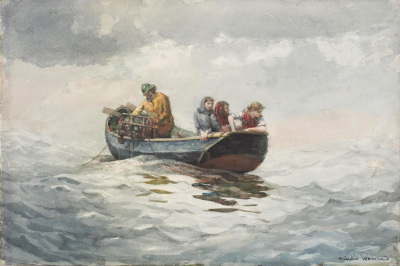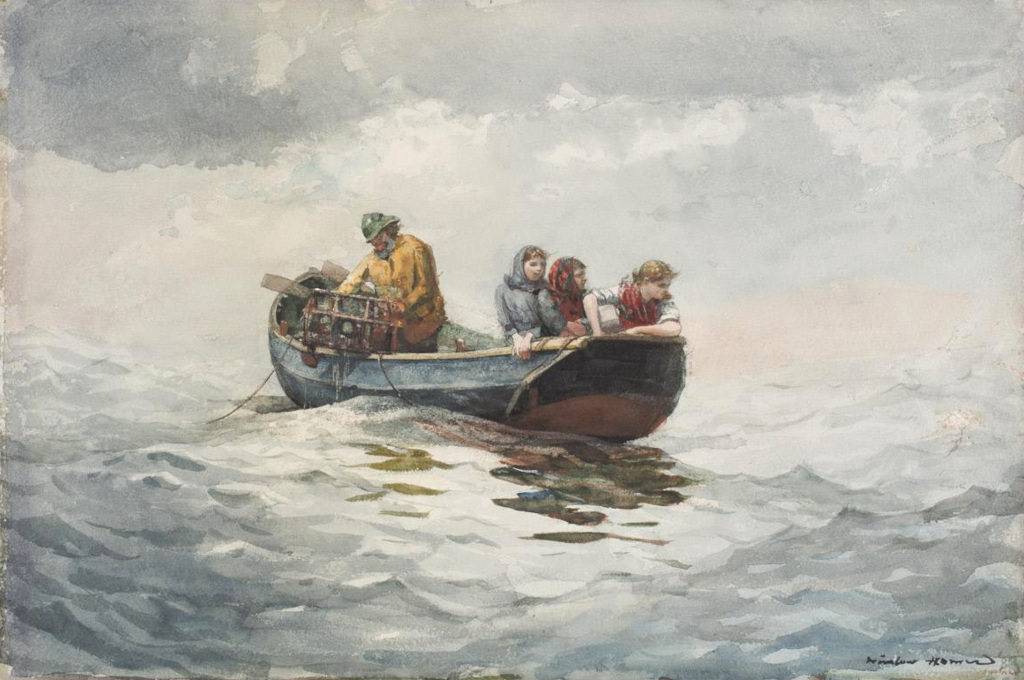 Buy Art Prints Now
Buy Art Prints Nowfrom Amazon
* As an Amazon Associate, and partner with Google Adsense and Ezoic, I earn from qualifying purchases.
Crab Fishing was completed by Winslow Homer in 1883. It is a watercolour artwork and one of many from his career that were themed around life at sea. Grenville H. Norcross would bequest this piece to the Worcester Art Museum, USA.
This piece focuses the eyes on the figures within the boat, with plenty of detail having been afforded to them. By contrast, Homer leaves the sea around them, and particularly the sky, as very loose and without much definition. The water is sloping, with reflections of the boat as it passes through these rough seas. Despite the turbulent journey, the passengers are happy to continue to fish for crabs, excited by their day out. Three young girls look out over the edge of the boat whilst the accompanying sailor takes care to ensure their safety on this voyage. We do know from careful inspection of Crab Fishing that Homer would layer opaque layers of paint for the sea which produced a charming finish, though without bring too much precise detail in. When using oils he would take a slightly different approach to his seascapes, giving too quite different methods of the same locations.
Homer concentrated on this genre from around the 1880s onwards, taking in an area close to his studio in Maine. He would also study in England for a period and later on started to spend his winters in the Caribbean. One can find shipwrecks in the Bahamas later on, and he continued to re-imagine the seascape genre several times over. This particular piece came about during his time staying in England where crab fishing was a popular pastime for some, as well as a professional occupation for others. Homer was in Cullercoats for over one and a half years, sampling the local culture. This was fishing village in the North East of England where fishing was a major part of life for most families. He would therefore be deeply entrenched in people's lives whilst capturing this type of content. He must have enjoyed his time here in order to stay as long as he did, particularly considering his patriotic nature and love for the US which is shown in many of his other paintings.
Homer had studied and observed soldiers during the American Civil War and so was used to being in different surroundings. Within England he would continue to observe local people, understanding their cultural normaties and here he would also find new ideas for his work. The vessel displayed here would not have been familiar to him, for example, and was known as a Coble, which was a local type of boat. Watercolour art had a long history within the UK and so it made sense for him to worki in this manner here, perhaps inspired by painters from previous generations such as Turner and Constable. Crab Fishing remains an important addition to the body of work that he produced whilst staying in the UK during the 1880s.




